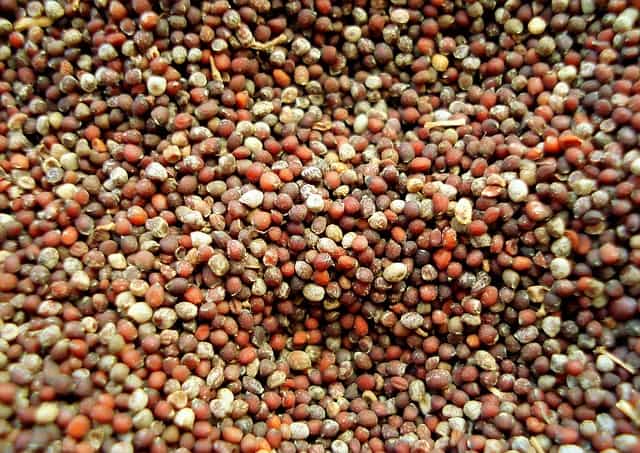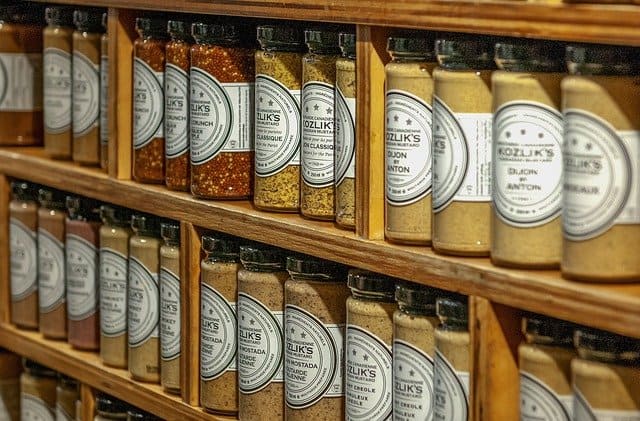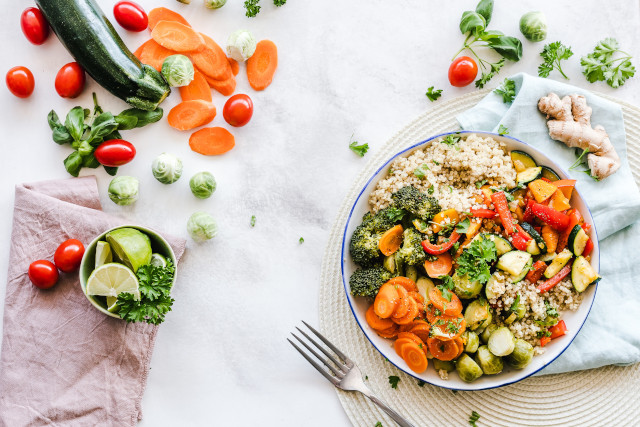
It is no great secret that a healthy and balanced diet can be a powerful ally when combined with insulin serum and whatever else medical treatment prescribed in the fight against diabetes. After all, an unhealthy diet can wreak havoc on a healthy metabolic system, not to mention a diabetic one where insulin isn’t doing its job.
However, keeping a healthy diet has its own challenges. One of them is not derailing from the regimen, which as all we dieters know isn’t easy because a healthy diet excludes some very tasty but unhealthy foods from our lives, such as mayo, ketchup, most store-bought sauces, to just name a few.
Contents
After the initial momentum on a diet trails off, our eating life quickly plateaus into monotony and bored dullness. We need something to spice up our food life. Fortunately, there is one staple condiment we all love, is available off the shelf of any grocery store, proves to be generally healthy and surprisingly beneficial for those with diabetes.
This magical-sounding condiment comes in the forms of grain, powder, and paste. This magic is called mustard. In this blogpost we count the # ways mustard benefits diabetics.
What is mustard?
Mustard is a plant whose leaves and seeds are both edible. Our beloved condiments like yellow and Dijon mustard are made from the ground mustard seeds. Interestingly, mustard plant is related to such healthy veggie families as broccoli, cabbage, and Brussels sprouts. But since most of us don’t cook with mustard leaves, we’re going to focus on the mustard seeds and the pastes made from it in this post.
So, what exactly makes mustard healthy?
It lowers blood sugar levels
An arch-nemesis of diabetics is blood sugar level. In a clinical trial, scientists found that mustard extract was effective in lowering blood sugar levels in participants with type 2 diabetes. However, this study was comparing the blood sugar-lowering effects between medication alone vs. medication and mustard combination. So it’s probably safer to conclude that while mustard can amplify the effects of blood sugar-lowering meds, it cannot replace medicine.
It is a rich source of antioxidants
Diabetes does tremendous damage to the body’s organs by causing inflammation. And inflammation doesn’t only come from diabetes—it can also occur in non-diabetic people if their bodies were subjected to oxidative stress. Therefore, it wouldn’t be far-fetched to say that diabetes probably worsens inflammation by encouraging some kind of oxidative processes.
What could protect the body from inflammatory processes? Antioxidants. While it is well-known that foods like yoghurt and blueberries are antioxidant-rich foods, the antioxidant properties of our favourite mustard is relatively less known. According to Healthline, mustard is rich in a type of antioxidants called sinigrin, a substance responsible for the signature mustard pungency. In a study published on PubMed, researchers found anti-inflammatory benefits of sinigrin.
Mustard may be spicy, but don’t be fooled: Unlike your palate, the body tissues will not be flamed up from a dollop of this yellowish spice.
It slows down the progression of diabetes cataract

Diabetes can cause a host of eye problems, including cataracts, glaucoma, and even vision loss. Not only so, people with diabetes tend to get worse faster in these eye conditions. As the eyes deteriorate from these problems, often the only way to restore to normal vision is by surgery or medication, which have their risks and are hell of a lot more expensive than mustard.
In a study published in 2010, researchers found that mustard extracts can hinder the development of cataracts in diabetic patients over an 8-week period.
Although it didn’t seem to cure the eye condition, mustard’s ability to slow down the deterioration suggests that maybe taking this spicy condiment in small amounts can have preventive effects. Or, if the eyes already present with the above-mentioned problems, it can halt their progression enough so that more drastic medical measures may be prevented.
It is nutritious
Human body is like a machine, and machines need sufficient fuel to run properly. In physiological terms, the various nutrients in foods are the body’s fuel. As already discussed, even if insulin is in control, an otherwise unhealthy body may cause complications for those with diabetes. Thus, appropriate nutritional intake is particularly crucial for diabetics.
According to the U. S. Department of Agriculture’s FoodData Central database, mustard seeds (from which mustard paste sold in stores is made) are an excellent source of fibre, potassium, calcium, iron, magnesium, vitamin C and B6.7
Of course, no one is looking to eat this hot stuff by the spoonful, but compared to other condiments like ketchup, mayo, ranch dressing, which are often packed with saturated fat (which mustard seeds contain very little, amounting to only 1% of daily value in 100 grams) and added sugars and artificial flavours, mustard is an alternative that’s quite healthy.
It helps you lose weight
A common side effect of taking insulin in diabetic patients, says Cleveland Clinic, is weight gain. While it is a good sign that insulin treatment is working, for insulin signals the body to store energy using sugars in the blood, weight gain can heighten risks for heart disease.
According to a 2006 study, it was found that spices have preventive effects on excessive body weight, by boosting metabolism and through what’s known as a thermogenic effect, which denotes the dissipation of energy through heat in the body.
Mustard belongs to the spice group.
As we’ve seen, this lovely yellow-brownish paste is not only delicious and nutritious, it has medicinal effects when combined with the typical diabetic treatment to further better the overall health. However, a key to keeping a healthy diet is to not get tired and bored of it. So no matter how delicious an ingredient is, variety is crucial. Here are some different ways you can use mustard in your meals:
- Use it as your dressing on a sandwich instead of ketchup or mayo or barbecue. It goes well with all kinds of meat and veggies, but try to go with those with a robust and earthy taste.
- Use it to flavour your salad dressing instead of creams and sugars that are ubiquitous in store-bought cans. Add a pinch of salt to balance the flavour. If you want sweetness, consider smashing up an avocado or slicing up a couple of cherry tomatoes instead of adding sugary stuff like honey.
- When roasting or pan frying a nice slab of meat, use mustard as marinade. Don’t worry—the pungent taste will linger in subtlety once heat is applied.
- Go to the local market and hunt for differently flavoured mustards, but remember to take a look at the ingredients list and avoid anything that has added sugars.
These are only the beginning. Search the Internet. Surely there are a whole community of mustard loving foodies out there with more ingenious recipes. For safety’s sake, though, take those recipes to your doctor to make sure it’s diabetes-safe. Now that we’ve covered the grounds for the benefits of mustard, because it’s such a delicious addition, some precautionary tips are in order.
Potential side effects of mustard

We said “tips,” but really it could all be summarized into this: Moderation is king.
According to Healthline, consuming too much mustard, over the long run, can lead to abdominal pain, diarrhea, and gut inflammation. Furthermore, the uncooked mustard seeds (which is the case for most store-bought mustard pastes) contain goitrogens which, in large quantities, interfere with the thyroid, a gland that helps regulate your metabolic system.
All these may sound pretty scary, but since mustard is mostly taken as a condiment, it’s probably never the case that someone “OD’d” on mustard. (We can’t take that much heat and pungency at a time, anyway.) But the main point remains: An over-indulged medicine is as poisonous as a toxin.
So, in conclusion, to maintain an overall healthy body to aid in the struggle with diabetes, a healthy, balanced, and nutritious diet is a must. But among the most challenging things about keeping a diet is derailing from it because we get bored and tired of the monotonous (and often bland) tastes.
But luckily, spices are among the healthiest additions to a meal that boosts flavours, and among these spices, mustard not only makes delicious recipes but provides health benefits that might be particularly good for people suffering from diabetes. Some of its effects benefit diabetics directly, while others do so indirectly. Here we have already listed 5 ways in which mustard brings these benefits to our health.
We have mentioned in the beginning that because mustard paste, which is made from mustard seeds, that is what this post has focused on. But a peruse of the references listed below will reveal that a lot of research has been done on the plant as a whole, and not just the seeds. Although that doesn’t negate any of the benefits we listed, this might suggest that a diet where the mustard leaves are incorporated could potentially provide even more benefits.
A spoon of mustard, a spoon of health—but only in moderation.





